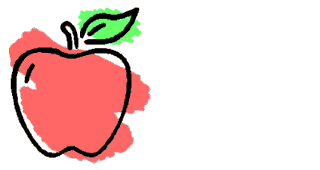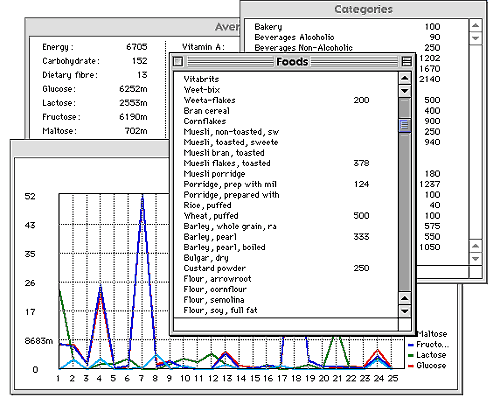
(Up to OJB's Applications Page) FoodAn: Update March 2007This program hasn't been maintained. It runs adequately in the Classic environment on PowerPC-based Macs and on any old Macs running Mac OS 9, but (because of the lack of the Classic environment) it can't be used on the current Intel Macs. Due to the programming environment used its unlikely to ever be updated for new systems. For information on more recent projects look at my project list. FoodAn: AboutThis program is designed to analyse many different aspects of diet and food intake. Because it is used by students with no computer skills it is easy to use as well as being versatile. Nutrition was developed by Owen Baxter and is used for the purpose of both education and research. FoodAn maintains a database of up to 1200 foods with up to 45 nutrients per food in up to 40 different categories. Then a second database of foods and amounts eaten, each database can store many entries and any number of databases can be combined. 
The main Food Analyser screens: on the right the database of foods which can be selected from to add the foods to be analysed to the diet screen on the left. Graphs and statistics on nutrients and costs of any diet can be created in many different ways. For example, changes in intake for any nutrients over a period of time can be graphed. Totals, subtotals and averages food intake (per meal, day, etc) can be quickly displayed. Comparisons of individual foods, food groups, different subjects and or total intakes can be displayed. Comparisons of actual food intake with recommended can be made. Any number of sets of recommendations can be stored. The group of foods or individual foods which supplied different nutrients can be analysed. For instance it can find the percentage of the fat intake that dairy products contributed to the total. 
Various Food Analyser analysis screens, including analysis of average dietary intake over a period of time, an analysis of the origin of various nutrients in the total diet, a list of the amount of each food and a graph of change in amount of nutrients over time. Different reports can be created, then displayed, printed or saved to disk for further analysis in other programs. Data can be entered through the keyboard or from a prepared file. Data can be imported and exported to other Mac programs (or other computers). For instance further analysis could be done with a spreadsheet, database or statistics package. Preferences concerning the operation of the program are stored so that it can be customised for individual users. The program requires a Macintosh computer with at least 1 MB of memory and 800KB of disk space to run. It will work on almost any Mac, even a Mac Plus without a hard disk! A Power Mac native version is available and it runs on Mac OS 7, 8 and 9 and in the Classic environment of Mac OS X (but not on Intel Macs). FoodAn: AdvantagesThe program can replace spreadsheet and databases which are commonly used. Because it is a Macintosh application it operates much more quickly and efficiently than these alternatives and doesn't require any expensive extra software to operate. A manual (40 pages) is supplied with the software and newsletters and seminars are available (this program is obsolete and the support is no longer available). ![[Up]](../XuShared/Up2B.jpeg)
|
||||||||||||